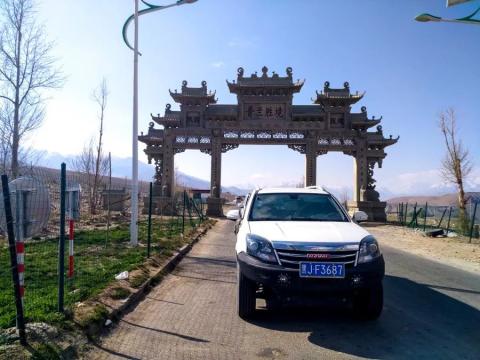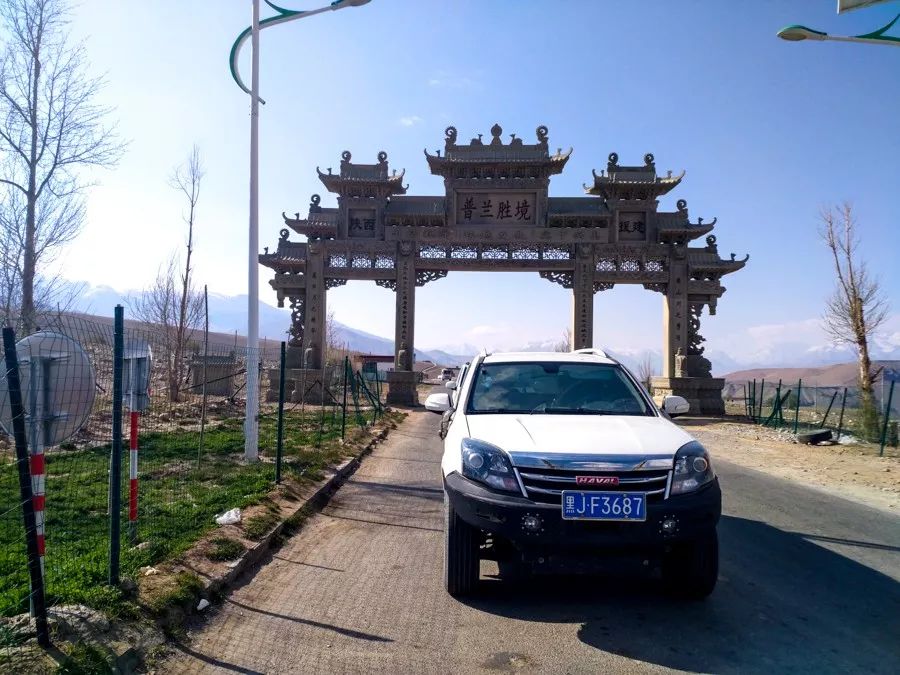
2On May 30, 2018, we left Pulan County and headed to Shiquanhe, the capital of Ali.
In China, the "capital" is the administrative center of an ethnic autonomous area. Such as Hohhot in Inner Mongolia Autonomous Region, Yinchuan City in Ningxia Hui Autonomous Region, Urumqi in Xinjiang, Lhasa in Tibet, etc. We used to often say that Lhasa is the provincial capital of Tibet, but in fact it should be the capital.



When we were preparing before going out, we were always confused by "Daban" and "Yakou". They all refer to mountain passes, some are called Daban, and some are called Yakou. We can't figure out the difference between them.
In fact, they just have different names. Mountain passes in Tibet are all called Passes, and those in Xinjiang are all called Daban. But the Shiquan River has not left Tibet yet, so why is it also called "Daban"? The reason is simple, because Alibaba was under the jurisdiction of Xinjiang from 1951 to 1979. It was only returned to the leadership of Tibet in March 1979, but it still maintains this name.
In addition to "Yakou" and "Daban", there are also some free translation names, such as Lion Quanhe , Xiangquan River , Kongque River, Maquan River , these Behind the names are given vivid stories to express the tenacious souls in the desolate plateau.
Interestingly, the Shiquan River in Shiquanhe Town is the Tongtian River in Journey to the West (from an encyclopedia, no one can tell whether it is true or not, it is a mythical work after all).

Black-necked cranes can often be seen hanging out near water sources on the road.


Tips: If you applied for a border defense permit in Lhasa and want to go to Xinjiang, you must go to the border defense brigade in Shiquanhe Town to exchange (apply for) a border defense permit for Xinjiang with your previous border defense permit and write down your destination. Yecheng is enough. Except for Yecheng, most areas in Xinjiang do not require a border defense permit. If required in some areas, it is usually applied in a nearby city.
If you want to travel from Xinjiang to Tibet in the opposite direction, you can apply for it at the Border Guard Brigade in Yecheng or Sitiyami City. Just fill in the Ngari area as your destination.
On June 1, 2018, we set off from Shiquanhe Town to Xinjiang. We filled up the car with gas before departure.
Since it was our first time to go to Xinjiang from the Xinjiang Line, my husband asked many friends for advice when he was in Lhasa. It is said that it is very difficult to fill up with gasoline on the road from Shiquanhe Town to Yecheng. For this reason, we also prepared a 20-liter bottle Oil drum.
But the real situation is that there is no shortage of gas stations on the road. There are gas stations in Shiquanhe Town, Ritu County, Sanshiliying, Dahongliutan and . The whole journey is about 1,200 kilometers. , the supply is sufficient, even more than in some places in Tibetan areas . Oil quality The quality of the oil is also not a big problem, except that it is a little more expensive.
We refueled at Dahongliutan and drove to Yecheng, so there was no need to worry. However, these gas stations, such as Sanshiliying, Dahongliu, etc., are not displayed on the navigation, so it always gives people the illusion that it takes nearly 1,200 kilometers to fill up with gas, which makes them feel very stressed. No?
There are many checkpoints along the way. At each stop, you need to check your ID card and border security certificate. There will also be a speed limit sign, handwritten time to reach the current station and the fastest time to reach the next station, but it is never stated. We usually have to calculate the speed limit in the car.
But if you can't find the speed limit strip, then congratulations, you can see the beautiful scenery on the road again. You must pass the speed limit strip.
The speed limit is generally in the 60-80 range. In such good road conditions, this speed is very slow, so you can stop the car without hesitation and quietly appreciate the magic and majesty of nature.
Occasionally, you can also explore unknown caves. There are so many along the way, they look so mysterious!




Obvious human traces

After starting from Shiquanhe Town and passing through Ritu County, we came to Pangongcuo. We were not so excited when we saw her for the first time, but after the aerial photography, we were really surprised. The lake water is clear and the patterns on the bottom of the lake are as beautiful as oil paintings.




Of course, in addition to natural scenery, you can also see various wild animals on the road, not far from the roadside.



Silently hiding a wild donkey, it feels similar to a domesticated donkey, except that it is really unmatched in its stubbornness. We often hear stories about Tibetan wild donkeys racing against cars. The ending is that humans worry about their physical endurance and let them win the race.

Through the efforts of many friends (a tribute to the volunteers), the number of endangered bar-headed geese has doubled in recent years, and flocks of bar-headed geese are often seen along the way.






Tibetan antelope👇


There is nothing to say about the scenery on the road. Every photo you take is a blockbuster. It is very beautiful, but also very desolate.































The altitude along the Xinjiang-Tibet Line is very high. Not only can you see the world's highest national highway mountain pass, the red soil Daban, but you can also encounter the terrifying Dead Man's Gully.

Sometimes altitude and air pressure can cause problems with the sensor device in the car. During one part of the journey, the altitude displayed in the car was 5,800 meters, which really scared us to the point of sweating. After comparing it with our mobile phones and road signs, we found out that it was the altitude displayed in the car. The problem.

"I have peed in Daban, Jieshan, and slept in the Dead Man's Ditch." This sentence is originally used to describe a person who has rich experience and courage, but it also shows the terror of the "Dead Man's Ditch" in the hearts of drivers taking the Xinjiang-Tibet Line. impression.
Local legend has it that after the advance troops of the People's Liberation Army entered Tibet from Xinjiang in 1957, the company was wiped out overnight due to high altitude in Quanshuigou, so the place was renamed "Dead Man's Ditch".
My husband is not here. Sleeping in the Dead Man's Ditch ", but he has Pee He said he wanted to make a map, and the dots on the map were his Spread Urine I don't know where his Urine How can there be so many?

Today's Xinjiang-Tibet Line is no longer as bad as it was a few years ago. Most of it is paved. Only the three Dabans in Xinjiang are still dirt roads, and the soil in one Daban is particularly thick. In some places, it is even There is 10 centimeters of floating soil. Once the car passes by, no one can be seen at all. Fortunately, except for these three Daban, the rest are good roads.
But these are not as good as the altitude sickness caused by high altitude and thin oxygen. Among them, the "Dead Man's Groove" is the most terrifying.


It is said that every year at the beginning of May, when the mountains are open to traffic, you will always encounter a car that has broken down here at some unknown time. When you open the door, you will see the driver and fellow passengers in the cab sitting there with the same expression as before. When you call, there is no answer. , as soon as the car door was pulled, the person fell out of the car in a slumped posture.
If these "reports" contain fictional and exaggerated elements, the "on-the-ground reports" of the armed police troops stationed on the Xinjiang-Tibet Line rescuing more than 3,200 tourists in distress over the past eight years are enough to make people shudder and feel horrified.

A lot of information says that "Dead Man's Valley" is a canyon with an altitude of more than 5,000 meters. It is the place on the Xinjiang-Tibet Highway that is most susceptible to altitude sickness. No matter how strong a person is, he can avoid Mazar, avoid black card, and avoid altitude sickness. You can cross Kangxiwa and escape the sweet water sea, but you can't escape the feeling of rebelling in the Dead Man's Trench. Some people even died because of it. It seems that this place is full of evil spirits, and it truly lives up to its name.

After passing Quanshui Lake, you can see the border of Ali's jurisdiction. Once you leave here, you have entered Xinjiang. Suddenly, you are still a little reluctant to leave, but the unknown and curiosity of the road ahead drive us to continue setting off.

